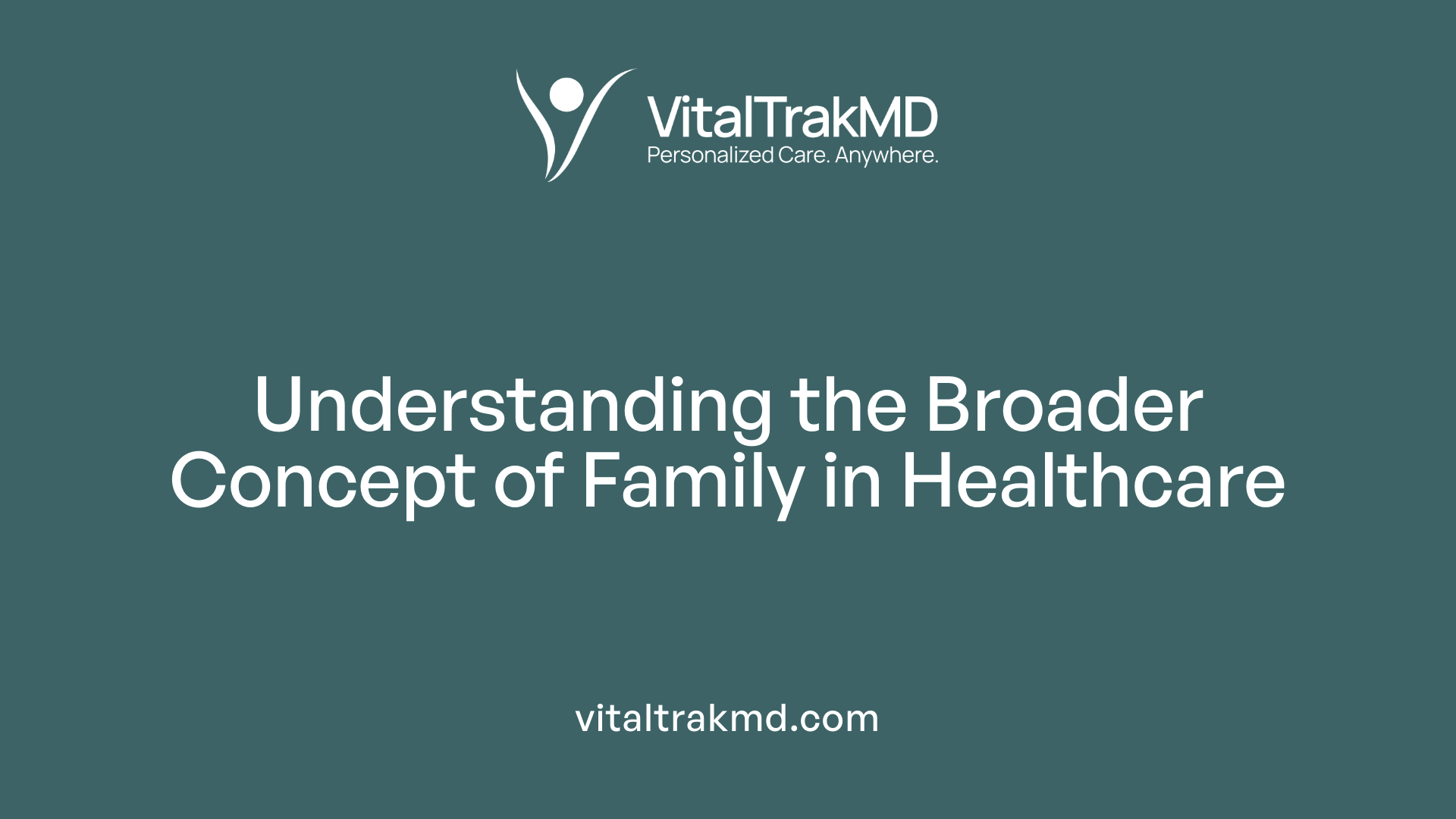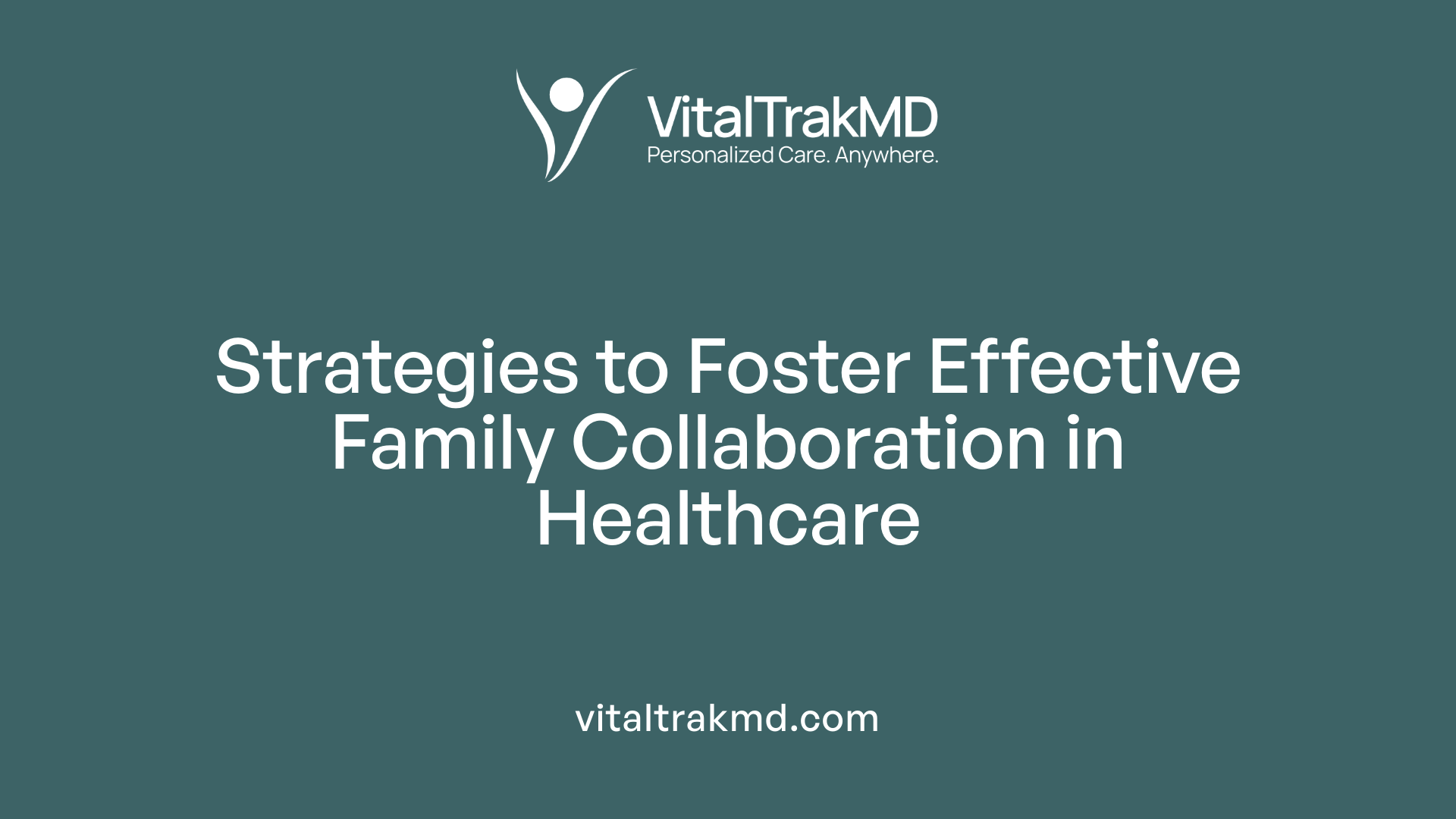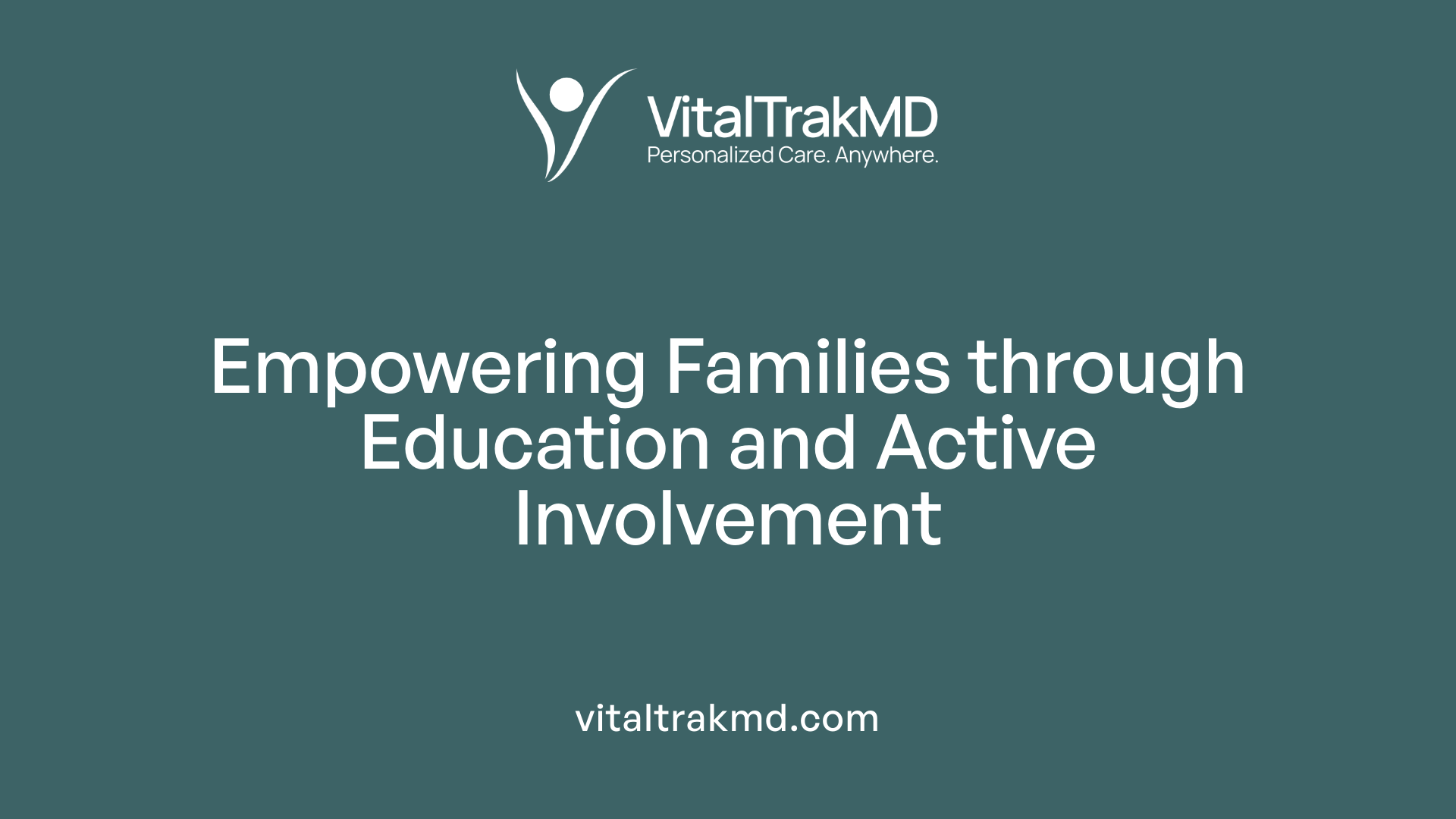Can My Family Be Involved in My Care Plan?

Understanding the Importance of Family Involvement in Care Planning
Family involvement plays a crucial role in delivering effective, personalized healthcare. From emotional support to practical assistance, family members contribute significantly to improving health outcomes and ensuring that patient preferences and needs are prioritized throughout the care process.
The Critical Role of Family in Care Planning

Why is family involvement important in care planning?
Family engagement plays a vital role in the effectiveness of care planning, particularly for older adults and individuals with chronic health issues. When family members are involved, they provide essential emotional and practical support that directly impacts health outcomes.
Family members help enhance communication between patients and healthcare providers, ensuring that the individual's needs, preferences, and values are clearly understood and incorporated into the care process. This support is crucial for managing complex health conditions, improving medication adherence, and navigating healthcare resources.
Moreover, involving family members in discharge planning and decision-making helps facilitate smoother transitions from hospital to home or other care settings. It reduces the risk of readmission by ensuring that care plans are tailored to the individual's specific circumstances and that caregivers are prepared to provide ongoing support.
Research indicates that family participation leads to better health results, including improved disease management, quicker recovery, and higher patient satisfaction. It also helps address emotional needs, combat feelings of loneliness, and promote a sense of security in vulnerable individuals.
Including family in the planning process nurtures a supportive environment that fosters safety, adherence to care protocols, and respect for the patient's wishes. This collaborative approach ultimately leads to enhanced quality of care, safer healthcare delivery, and improved overall health outcomes.
Defining Family and Its Role in Patient Care

What is the role of family in patient care?
Family involvement is a cornerstone of effective healthcare, especially for older adults and those with complex needs. Family members often provide emotional support, assist with understanding medical instructions, and help ensure medication adherence. Their participation helps improve communication between patients and healthcare providers, fostering trust and confidence in the care process.
Engaging family members early — particularly at diagnosis and during care transitions — leads to better clinical outcomes and enhances safety. Families act as advocates by sharing crucial information about the patient's medical history, preferences, and needs, which informs personalized care plans. They also participate actively in decision-making, discharge planning, and advance care planning, ensuring that the patient’s wishes are respected.
Support from family can reduce hospital readmissions, improve mental well-being, and help manage daily activities like nutrition and mobility. Their presence and involvement foster a supportive environment that promotes quicker recovery and higher satisfaction with care, ultimately making the healthcare experience more patient-centered.
Broad definition of family including social, psychological, and legal relationships
The term 'family' encompasses more than just biological relationships. It broadly includes social, psychological, and legal ties—such as close friends, partners, or legal guardians—who offer emotional, physical, or financial support. This flexible definition recognizes that support networks extend beyond traditional family structures and can significantly influence health outcomes.
Healthcare providers and policies now acknowledge this broader concept, emphasizing the importance of including all trusted individuals involved in the care process. Recognizing diverse family dynamics helps tailor interventions and communications, ensuring everyone involved can contribute effectively.
Family as advocates and information providers
Family members serve as key advocates for their loved ones. They help communicate preferences, provide clarity about the patient’s history, and alert healthcare teams to changes in condition. This advocacy is especially vital when patients face cognitive impairments or physical disabilities that limit communication.
Effective advocacy involves honest and respectful dialogue, managing conflicts, and sometimes mediating between the patient and care providers. Clear roles and regular updates—such as designated family contacts or Most Responsible Family Members (MRFMs)— streamline communication, making sure vital information flows smoothly.
The importance of identifying the Most Responsible Family Member (MRFM)
Healthcare teams identify a Most Responsible Family Member (MRFM) to serve as the primary point of contact. This individual helps coordinate care, ensures information exchange, and acts as an advocate, especially during complex transitions like discharge or emergency situations.
Designating an MRFM simplifies communication, enhances collaboration, and reduces confusion or miscommunication. This role is formalized within health systems, such as under CMS guidelines, which support involving a trusted family member committed to understanding and sharing the patient’s needs.
Building strong family involvement through clear roles and open communication improves care quality, boosts emotional well-being, and aligns treatment with the patient's values and preferences. Overall, recognizing and empowering family supports shared decision-making and promotes safer, more personalized healthcare experiences.
Benefits of Family Engagement in Care
What are the benefits of involving family members in a patient's care plan?
Including family members in a patient's care plan brings multiple positive outcomes. First, it provides essential emotional support, which can reduce feelings of loneliness, depression, and anxiety. For elderly patients or those with chronic conditions, this sense of connection and support improves their overall mental health and well-being.
Second, family involvement enhances safety by assisting with medication management, monitoring for early signs of health deterioration, and supporting adherence to treatment plans. Family members often help detect subtle changes in the patient's condition that might otherwise go unnoticed, enabling prompt intervention.
Third, engaging family members improves communication between patients and healthcare providers. Family acts as a liaison, relaying concerns, preferences, and reactions to treatments, which leads to better understanding and tailored care.
Research shows that active family participation helps reduce hospital readmission rates, ensures personalized care, and increases patient satisfaction. It also encourages shared decision-making, empowering patients and their loved ones to navigate complex healthcare needs confidently.
Overall, involving family members in care plans not only supports physical health but also bolsters emotional resilience. This collaborative approach creates a more coordinated, person-centered healthcare experience that can enhance outcomes and quality of life for patients facing health challenges.
Strategies for Effective Family Collaboration in Healthcare

How can families work together in healthcare?
Family involvement is crucial for delivering comprehensive and person-centered care, especially for seniors and individuals with complex health needs. Families can work together by actively participating in decision-making and care planning processes. This means staying informed about the patient’s health status, understanding treatment options, and sharing their insights and concerns with healthcare professionals.
Engaging family members as partners helps ensure that the patient’s preferences, values, and needs are prioritized throughout their care journey. Effective collaboration involves establishing clear roles and responsibilities, such as identifying the Most Responsible Family Member (MRFM) who acts as the primary contact for communication. Regular updates and open dialogue are vital for making necessary adjustments to the care plan.
Utilization of communication tools, such as virtual meetings, phone calls, and online portals, can bridge distance gaps and keep family members involved even if they are not physically present. Educational resources like support groups, family councils, and training programs empower families with knowledge about medical conditions and caregiving tasks.
Building trust among family members and with the healthcare team enhances cooperation and reduces conflicts. Clearly defining roles and responsibilities helps manage caregiving duties more efficiently and prevents burnout. Creating a supportive environment where families actively participate fosters better health outcomes, improves safety, and reinforces the emotional well-being of the patient.
In essence, healthcare systems that prioritize family engagement through policies, communication strategies, and educational initiatives enable families to work together effectively. This collaborative approach ensures that patient care is compassionate, safe, and aligned with individual preferences, leading to higher satisfaction and better recovery outcomes.
Educating and Involving Families in Care Processes

How are family members educated and involved in patient care?
Family members play a crucial role in the healthcare journey of their loved ones. Education plays a vital part in empowering families, which is often facilitated through structured programs like the Patient and Family Participation Education Program (PFEP). This program aims to improve healthcare providers' attitudes and skills in engaging families effectively.
Families value being recognized as part of the care team. They want to be included in care planning and decision-making processes, ensuring their insights and concerns are considered. Transparent communication with healthcare professionals helps build trust and confidence, allowing families to support their loved ones more effectively.
In particular, families of individuals with cognitive impairments, such as dementia, seek ongoing involvement to ensure personalized and consistent care. They are encouraged to participate in discharge planning, which lays out the steps needed for safe and continuous support after hospital stays or transitions.
Patient- and family-centered care (PFCC) emphasizes listening, sharing information, and fostering collaboration. This approach encourages families to contribute their perspectives, helping tailor care plans to meet individual needs and promote recovery.
Effective family involvement relies on education, open lines of communication, and organizational support. When healthcare systems recognize the importance of family, they can better facilitate their participation, leading to improved health outcomes and greater satisfaction for patients and caregivers alike.
Creating Inclusive Care Plans and Navigating Legal Regulations

What is involved in creating a care plan that includes family participation?
Developing a care plan with family involvement is a collaborative, person-centered process. It entails engaging the individual receiving care, family members, and other relevant advocates to assess needs comprehensively. All parties contribute insights about preferences, daily routines, medical history, and specific support requirements.
The process involves gathering input from the person and their family, ensuring their perspectives shape the support strategies. The plan covers how services will be delivered, addresses funding options, and outlines responsibilities for each support recipient or caregiver.
Regular reviews are essential; updates are made based on health changes, new needs, or evolving circumstances. This ongoing involvement helps maintain a tailored and responsive plan. Legal considerations, such as respecting the individual's autonomy, privacy, and rights, are integrated into the process. Ensuring clear communication and shared understanding among all participants enhances effectiveness and supports personalized care.
Do laws or regulations affect family involvement in care, such as confidentiality and decision-making rights?
Yes, legal frameworks play a significant role in shaping how families participate in care. Confidentiality laws, like the Health Insurance Portability and Accountability Act (HIPAA), protect patient privacy but can also limit information sharing without explicit consent.
Legislation such as the Family and Medical Leave Act (FMLA) and laws related to surrogate decision-making establish the rights of family members to make choices or act on behalf of incapacitated individuals. Healthcare regulations, including the Privacy Rule, allow sharing information with family members if the patient consents or if they are deemed appropriate caregivers.
However, rigid interpretations of confidentiality laws can sometimes pose barriers. To promote effective family involvement, healthcare providers must balance respecting privacy with facilitating communication. This can be achieved through clear policies, obtaining informed consent, and training staff on legal requirements.
Overall, understanding and navigating these legal considerations are vital for supporting family participation while maintaining compliance with applicable laws and ethical standards.
Fostering Family Involvement for Better Outcomes
Family involvement is a cornerstone of effective, compassionate, and personalized healthcare. Ensuring open communication, respecting legal rights, and actively engaging families in care planning not only improves health outcomes but also enriches the caregiving experience for families and patients alike. Healthcare providers and policymakers must continue to support and facilitate meaningful family participation to build resilient, supportive care environments.
References
- The Value and Process of Engaging Family in Care Management
- How To Involve Family Members In Your Dementia Care Plan
- The Role of Family Involvement in Long-Term Care and Support
- Complexity and function of family involvement in advance care ...
- What is a Family Care Plan? | Substance Exposed Pregnancy Initiative
- Family Involvement in Senior Patient Care - ChenMed
- Family Members and Friends | HHS.gov
Recent articles
Want to Feel Better and Live Healthier?
Join hundreds of patients taking control of their health with personalized care that fits their life – not the other way around.
Rated 4.8/5 by 32+ customers







